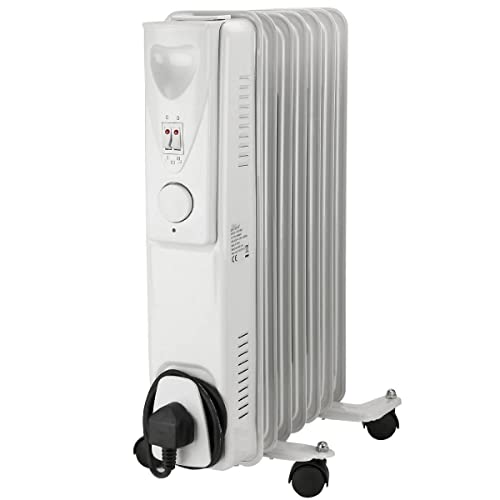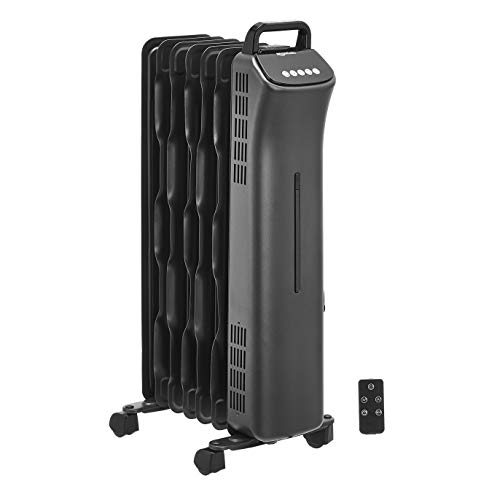15 Twitter Accounts You Should Follow To Learn More About Oil Filled W…
페이지 정보
작성자Latasha 댓글댓글 0건 조회조회 33회 작성일 24-08-21 03:02본문
 How to Install an Oil Filled Wall Mounted Radiator
How to Install an Oil Filled Wall Mounted RadiatorWall mounted radiators that are filled with oil are heated by an engineered thermal oil. Once the oil is warm, it gradually transfers the heat to your home through an air convection process.
The heat retentive nature of diathermic oils helps reduce energy consumption, thereby reducing running costs and cutting down on your heating costs. Many models also come with a thermostat that can be programmed and is available for 24/7 programming to allow you to save even more money.
How to Install an oil-filled radiator
If you're looking for a new method to heat your home, you should consider installing an oil filled radiator. These heaters work better than conventional heating systems and are perfect for wall mounting to evenly distribute heat throughout any room. They are also extremely energy efficient and will help you save money over time. However, in order to get the most of your new radiator, it is essential to install it properly. Installing your radiator electric oil filled radiators correctly will not only help it run efficiently, but also extend its lifespan.
In most cases, you can install an oil radiator that is wall-mounted yourself or consult a professional to get it wired to the electricity supply of your home. If you opt for the latter option, be sure that you're comfortable with handling electrical cables and pipes, since this method of installation could be expensive and time-consuming. It may also be difficult to reach the heater in order to fix or adjust it.
DIY installation is more affordable and speedy and you'll have your new radiator installed and running in a matter of hours. You'll also save money on electrical and plumbing work. It's also easier to move your heater when necessary.
Oil-filled radiators utilize a specially designed thermal oil to heat your home. They are much more energy efficient than other heater units. This is due to the fact that the thermal oil filled radiator plug in used in an oil radiator holds heat for a longer duration of time than other heating techniques. The heat from the radiator is then transmitted to your home via convection or thermal radiation. Some models of oil-filled radiators also include digital 24/7 programming that can help you manage and eliminate waste.
First Steps
The first step in installing an oil-filled wall-mounted radiator is to select the best location. This will not only decide how well it performs, but also the price of installation.
It is recommended to choose a position in which the heater can be easily accessible for maintenance as well as to resolve any heating system issues. You should also be aware of how the heater is connected to the power supply of your home and plumbing system. It is essential to ensure that the heater comes with a high-quality cable plug, and socket.
Modern electric radiators with oil are equipped with a range of features that will help you save money and energy in the long term. For example, they typically include built-in timers as well as tip-over protection features. Some also come with wifi connectivity, which lets you control the heating from your tablet or smartphone. This can be very useful since you can view the data on heat consumption for your radiator through an app that you download and use this to reduce the cost of energy.
Electric radiators with oil filled, unlike gas heaters, are able to heat the thermal oil inside them. The oil is used to create warm, convection-produced air which is released by the radiator. This is why these radiators are much more efficient than fan-driven heaters and have longer heating times. They also keep the heat they generate for longer than other heating systems. This is why they are a preferred option for those looking for a low-cost solution to their central heating needs.
Second Steps
A licensed electrician can switch from traditional heating systems into electric oil-filled heaters. This involves draining the heating system, and then removing the pipework. This is a lengthy and expensive process that should only be carried out by experts.
Oil-filled wall mounted radiators hardwired to your home can be replaced electrically, without draining the existing heating system. This method is cheaper and quicker and your new heating system can be up and running in one hour.
After the electrically-connected radiator has been fitted it is necessary to connect it to a power socket and turn it on. The majority of these radiators come with an electrical cord that's about 1.5 meters long and can be connected to a standard 13 amp power socket. It is also possible to pair these heaters with your wifi system, which makes them even easier to control and adjust.
Oil filled electric radiators have the advantage of being extremely efficient and creating a long-lasting warmth. They also don't cool as quickly as some other heating alternatives. Additionally, they are excellent in retaining heat, and consume less energy when switched off than most fan heaters that tend to be noisy, inefficient, and emit an unpleasant odor. Our selection of electric oil filled radiators includes advanced programming that includes precision thermostats and 24-hour scheduling. This will improve the efficiency of your heating and reduce your electric bill. This is thanks to the unique Fast-Flo technology. The benefits of these products are simple to see and makes them the choice of many homeowners.
Third Steps
Oil-filled radiators heat the oil by using an element of heating. The oil transmits heat to the metal wall of the radiator by conduction and then it heats the air around it by air convection. They also generate leftover heat, even after being turned off. This can reduce the cost of energy.
You can purchase electric heaters filled with oil that are wired ready to be installed by a professional. This can save time and money when replacing an existing central heating system. This method of installation must always be carried out by a qualified electrician. Installers should be able to connect electric heaters correctly to ensure safety and to avoid overheating.
If you own a brand new house with double-glazed windows, it is best to install your electric oil filled radiators away from the window. This will prevent them from absorption of cold drafts from the outside and transferring the heat into your living space. It is also important to ensure that you don't place any of your oil-filled heaters under a window which could result in condensation and mould.
If you opt to have your electric oil filled radiators professionally installed, they can be hardwired into the fused spur by a certified electrical engineer. This is a relatively inexpensive and simple task that can be completed within a couple of hours. This is the most safest method of installation because it ensures that your heater is connected properly, and is in compliance with all safety standards. It also ensures that your electrical system is able take on the extra load of your new heaters, as well as making sure that there is no damage to your wiring or other electrical components of your home.
Fourth Steps
Once the radiator is secured, all that's left to do is plug it in and turn it on. The majority of electric heaters have an safety screw to ensure that the radiator stays firmly fixed to the brackets. tighten it until it's the radiator is secure and ready to use. The electrical cable, usually around 1.5 meters long, is inserted to the back of the radiator. connect it to an ordinary 13-amp socket, then turn it on.
The heating element that is employed in these heaters heats a reservoir of thermal oil within the appliance. Once the oil is heated, it will then release warmth to the air around it by convection. The warmth will stay in the room for electric oil filled radiators about an hour before having to be switched off again.
It is unlikely that the heater needs to be refilled with new oil, but in the event that it happens it is best left to professionals and not something that can be done at home. Filling up these heaters will not only be a hassle and time-consuming, it could be a risk should it be done by a non-trained person.

댓글목록
등록된 댓글이 없습니다.

